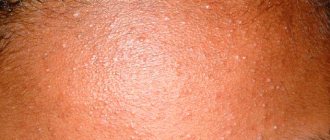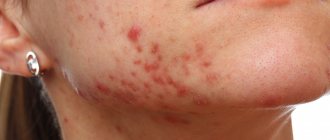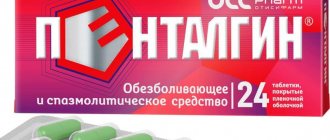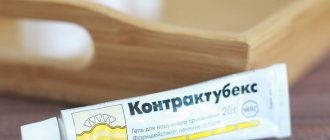Indoxyl 50mg+10mg/g 25g topical gel glaxo operations uk limited
Avoid getting the drug into the mouth, eyes, lips, other mucous membranes, as well as irritated damaged areas of the skin. If the gel accidentally gets into these areas, they should be rinsed well with water.
During the first week of treatment, most patients experience increased peeling and redness of the skin. Depending on the severity of these side effects, patients may use moisturizers, temporarily reduce the frequency of use of the drug, or temporarily discontinue use. The effectiveness of the drug when used less than once a day has not been studied.
If severe skin irritation occurs (eg, severe erythema, severe skin dryness and itching, severe tingling/burning), use of the drug should be discontinued.
Since benzoyl peroxide may cause increased sensitivity to sunlight, you should avoid prolonged exposure to sunlight and do not visit a solarium while using the drug. If sun exposure cannot be avoided, you should use sunscreen cosmetics for your skin and clothing that protects you from the sun's rays.
If the patient has sunburn, you should stop using the drug until the burns are healed.
The drug can discolor hair and colored fabric. Avoid contact of the drug with hair, fabric, furniture or carpeting.
Pseudomembranous colitis.
Cases of pseudomembranous colitis have been reported with the use of almost all antibacterial agents, including clindamycin. Their severity varies in severity from mild to life-threatening. Pseudomembranous colitis may occur several weeks after discontinuation of therapy.
Although pseudomembranous colitis is unlikely to occur with topical use of a combination of clindamycin and benzoyl peroxide, if prolonged or severe diarrhea occurs or if the patient suffers from abdominal cramps, treatment should be stopped immediately and a doctor should be consulted, as symptoms may indicate the presence of colitis caused by taking an antibiotic.
Resistance to clindamycin.
Benzoyl peroxide reduces the likelihood of the emergence of microorganisms resistant to clindamycin. However, patients who have recently used parenteral or topical clindamycin or erythromycin are more likely to have propionobacteria and saprophytic flora with previously acquired antimicrobial resistance.
Cross resistance.
The presence of cross-resistance between clindamycin and lincomycin has been established.
Resistance to clindamycin is often associated with resistance to erythromycin.
Influence on the ability to drive vehicles and operate machinery.
A negative effect of the drug on the ability to drive vehicles or operate machinery is unlikely.
Indoxyl
Avoid getting the drug into the mouth, eyes, lips, other mucous membranes, as well as irritated damaged areas of the skin. If the gel accidentally gets into these areas, they should be rinsed well with water.
During the first week of treatment, most patients experience increased peeling and redness of the skin. Depending on the severity of these side effects, patients may use moisturizers, temporarily reduce the frequency of use of the drug, or temporarily discontinue use.
The effectiveness of the drug when used less than once a day has not been studied.
If severe skin irritation occurs (eg, severe erythema, severe skin dryness and itching, severe tingling/burning), use of the drug should be discontinued.
Since benzoyl peroxide may cause increased sensitivity to sunlight, you should avoid prolonged exposure to sunlight and do not visit a solarium while using the drug. If sun exposure cannot be avoided, you should use sunscreen cosmetics for your skin and clothing that protects you from the sun's rays. If the patient has sunburn, you should stop using the drug until the burns are healed.
The drug can discolor hair and colored fabric. Avoid contact of the drug with hair, fabric, furniture or carpeting.
Cases of pseudomembranous colitis have been reported with the use of almost all antibacterial agents, including clindamycin. Their severity varies in severity from mild to life-threatening. Pseudomembranous colitis may occur several weeks after discontinuation of therapy. Although the occurrence of pseudomembranous colitis is unlikely with topical use of the drug, if prolonged or severe diarrhea occurs or if the patient suffers from abdominal cramps, treatment should be stopped immediately and a doctor should be consulted, as symptoms may indicate the presence of antibiotic-induced colitis.
Benzoyl peroxide reduces the likelihood of the emergence of microorganisms resistant to clindamycin. However, patients who have recently used parenteral or topical clindamycin or erythromycin are more likely to have propionobacteria and saprophytic flora with previously acquired antimicrobial resistance.
The presence of cross-resistance between clindamycin and lincomycin has been established.
Resistance to clindamycin is often associated with resistance to erythromycin.
A negative effect of the drug on the ability to drive vehicles or operate machinery is unlikely.
Introduction
Acne is a multifactorial chronic dermatosis that affects up to 83–85% of teenage girls and 95–100% of teenage boys [1].
In addition, acne may persist or occur in adults. Acne negatively affects the patient's physical condition, and can also be a source of social problems and pharmacoeconomic consequences [2, 3]. Acne is one of the most common dermatoses. According to the literature, up to 650 million people suffer from acne in different countries [4], incl. about 90% of the teenage population of Europe [3, 5]. At the same time, acne is increasingly being reported in adults. Thus, in a study conducted in the UK with the participation of 749 adult volunteers over 25 years of age, the prevalence of facial acne in women was 54%, in men – 40% [6].
A survey of 197 Japanese schoolchildren and students showed that from primary school to college age, acne occurred in 58.6% of cases, and 93.3% of university students encountered this disease at least once during their lives [7]. In China, among 17,345 surveyed, 1.6% of adolescents aged 10 years suffered from acne; as age increased, the incidence of the disease increased and reached 46.8% at the age of 19 years, and decreased to 15.8% at the age of 25–29.
The authors emphasize that among adolescents 17–20 years old, acne is most common among men, and at the age of 30 years, it is more common among women. In general, after 25 years, facial acne is observed in approximately 50% of cases; in 12% of women and 3% of men, their clinical manifestations persist until middle age [8]. There is also an increase in the prevalence of acne among women. According to S. Preneau et al., this disease affects up to 50% of women over 25 years of age [9].
Pathogenesis
An important factor in the occurrence of acne is inflammation of the sebaceous follicle, which is the result of a combination of genetic predisposition (increased size and number of sebaceous glands), hormonal levels (androgens), exposure to bacteria (Propionbacterium acnes) and the inflammatory reaction of the hair follicle and sebaceous gland. Androgens stimulate increased production of sebum in the sebaceous glands; bacteria contain lipase, which converts lipids into fatty acids. Excess sebum and fatty acids cause corneocytes to block the hair follicle and sebaceous gland. As a result, the primary focus of acne is formed - a comedon [10].
Clinic and course
Acne is localized mainly on the skin of the face, upper extremities, upper chest and back and manifests itself as papules, pustules and nodules, as well as open and closed comedones [11].
The primary focus of acne, microcomedone, is a collection of exfoliated corneocytes in the proximal zone of the pilosebaceous follicle. Its evolution proceeds through further hyperproliferation, leading to the accumulation of corneocytes and sebum in the lumen of the follicle and the formation of a “plug”, clinically manifested by an open or closed comedon, or along the path of inflammation caused by the diffusion of soluble components of the comedon into the dermis with the formation of papules, pustules, nodes and cysts .
Closed comedones (white heads) present as pale, slightly raised, pinpoint papules without a clinically visible opening and are difficult to visualize. Open comedones can be flat or slightly raised above the skin level; their black color is due to melanin and oxidized lipids deposited within the detritus.
Erythematous papules have a diameter of 1–5 mm. The pustules are approximately the same size, filled with white sterile pus, and as the pathological process progresses, they turn into painful, dense nodes. Cystic acne elements are located deeper and are filled with pus and serous-bloody fluid [12].
More severe acne more often affects men [13].
Acne in children occurs during adolescence, which is characterized by serious physiological changes in the body. It is no coincidence that the manifestation of the comedonal form of acne, in particular in the central part of the face, is often the first sign of puberty. During puberty, an important factor in the pathogenesis of acne is the increased production of sebaceous gland secretions, due to their androgenic stimulation.
Mild acne often occurs in early adolescence and is limited to the appearance of comedones in the central part of the face. Their regression is often accompanied by the risk of hyperpigmentation and the formation of pinpoint, atrophic and hypertrophic scars in their place [13].
In adults, acne can persist from adolescence or first appear after age 25 and is usually mild to moderate in nature, affecting mainly the face.
There are two clinical forms of the disease:
- the most common inflammatory form, manifested by papulopustular elements and nodules on the skin of the lower part of the face;
- a less common retention form, characterized by the formation of “black dots” in the form of microcysts in combination with hyperseborrhea.
It is believed that the occurrence of acne in adults is due to hormonal causes, the presence of antibiotic-resistant strains of bacteria, the use of cosmetics, medications, smoking, chronic stress, and genetic factors. Confirmation of the important role of the latter is the presence in almost 50% of patients with acne of a first-degree relative with acne who developed after adolescence.
Thus, acne in adults differs from teenage acne: among adolescents, the disease is more common in young men, and they have the most severe forms of the disease, while after adolescence, acne affects mainly women and has a more pronounced inflammatory nature, and comedones, like usually absent or rare [9, 14, 15].
Taking into account the clinical picture and course of the disease, as well as the development of scars, acne is classified into mild, moderate and severe degrees of severity. Mild degree is characterized by the presence of comedones (white heads and/or blackheads), a small number of papules and pustules (usually less than 10) and the absence of nodes.
Moderate degree is characterized by the presence of several or numerous papules and pustules (from 10 to 40) and comedones (from 10 to 40). The presence of more than 40 papules and pustules with more extensive and deep nodular inflammatory elements (up to 5) is also classified as moderate acne.
In severe cases, there are numerous papules and pustules, as well as multiple (more than 5) nodular elements and scars that form as a result of previous severe acne [15].
Treatment
According to European (EADV) and Russian (RODVK) clinical guidelines, the choice of the optimal treatment option for acne should be made taking into account the clinical form and severity of the disease. It may also depend on the patient's quality of life indicators. In this case, it is advisable to prescribe more aggressive therapy to patients with a pronounced decrease in quality of life [11, 16].
For mild to moderate papulopustular acne, the high-level evidence recommendations are a fixed-dose combination of benzoyl peroxide and adapalene and a fixed-dose combination of benzoyl peroxide and clindamycin. Moderate-level evidence recommendations include the use of azelaic acid, benzoyl peroxide, topical retinoids, a combination of a systemic antibiotic, and adapalene. For moderate, more widespread forms of the disease, low-level evidence recommendations include blue light monotherapy, a fixed-dose combination of isotretinoin and erythromycin, oral zinc, a combination of a systemic antibiotic with either benzoyl peroxide or adapalene as a fixed-dose combination with benzoyl peroxide (for moderate , a more widespread form of the disease). Monotherapy with topical antibiotics is not recommended (i.e. has a negative recommendation) for the treatment of mild to moderate forms of papulopustular acne.
For nodular/globular acne, the recommendation of a high level of evidence is monotherapy with oral isotretinoin (conglobate form); recommendation of moderate level of evidence - a combination of a systemic antibiotic and azelaic acid (conglobate form); low level of evidence recommendation – oral antiandrogen drugs and oral antibiotics (conglobate form); a combination of a systemic antibiotic and adapalene, benzoyl peroxide and a fixed dose combination of adapalene/benzoyl peroxide [11, 16].
The presented treatment options affect various pathophysiological factors in the development of acne.
When choosing the optimal treatment option for a particular patient, taking into account the severity of his disease, doctors need to find a drug with an appropriate balance of characteristics such as effectiveness, onset of action and the risk of side effects.
In this regard, you should pay attention to a drug with a high level of evidence from European, Russian clinical guidelines and the American Academy of Dermatology (2015) for mild to moderate acne, in particular for inflammatory lesions in adults and adolescents aged 12 years and older, use of Indoxyl gel 5% once a day [11, 16–19].
Below is a brief description of the effectiveness and tolerability of Indoxyl gel 5% for use once a day for acne.
Indoxyl (clindamycin phosphate + benzoyl peroxide) is a registered trademark of Stifel, part of the Glaxo Smith Kline (GSK) group of companies.
According to the results of clinical studies, the use of Indoxyl gel (clindamycin 1% + benzoyl peroxide 5%) once a day compared with combination therapy with adapalene 0.1% + benzoyl peroxide 2.5% demonstrates:
- more significant therapeutic effect - after 12 weeks of treatment in the clindamycin 1% + benzoyl peroxide 5% group, the therapeutic effect was recorded in a statistically significantly larger number of patients (improvement by more than 2 points on the Investigator's Global Statistical Assessment [ISGA] scale relative to baseline values) compared with patients in the adapalene 0.1% + benzoyl peroxide 2.5% group (p<0.05);
- faster onset of action - in the clindamycin 1% + benzoyl peroxide 5% group, the time to achieve a therapeutic effect was statistically significantly shorter than in the adapalene 0.1% + benzoyl peroxide 2.5% group (p < 0.05), after 4 weeks in the group of clindamycin 1% + benzoyl peroxide 5%, a statistically significantly more pronounced decrease in the number of inflammatory elements was registered than in the group of adapalene 0.1% + benzoyl peroxide 2.5% (p < 0.05);
- comparable tolerability profile - in the group of adapalene 0.1% + benzoyl peroxide 2.5% at all analyzed time points, starting from the 1st week, erythema, dryness, peeling, itching and burning/tingling sensation were recorded more often (p<0.05) .
Treatment-related side effects were reported in 48.4% of patients in the clindamycin 1% + benzoyl peroxide 5% group and 78% of patients in the adapalene 0.1% + benzoyl peroxide 2.5% group [18].
Conclusion
Thus, in terms of clinical effectiveness, timing of clinical effect, treatment tolerability and improvement in the patient’s quality of life, the use of Indoxyl gel (a combination of clindamycin 1% and benzoyl peroxide 5%) turned out to be optimal compared to combination therapy with adapalene 0.1% + benzoyl peroxide 2, 5% for both immediate and long-term results.




